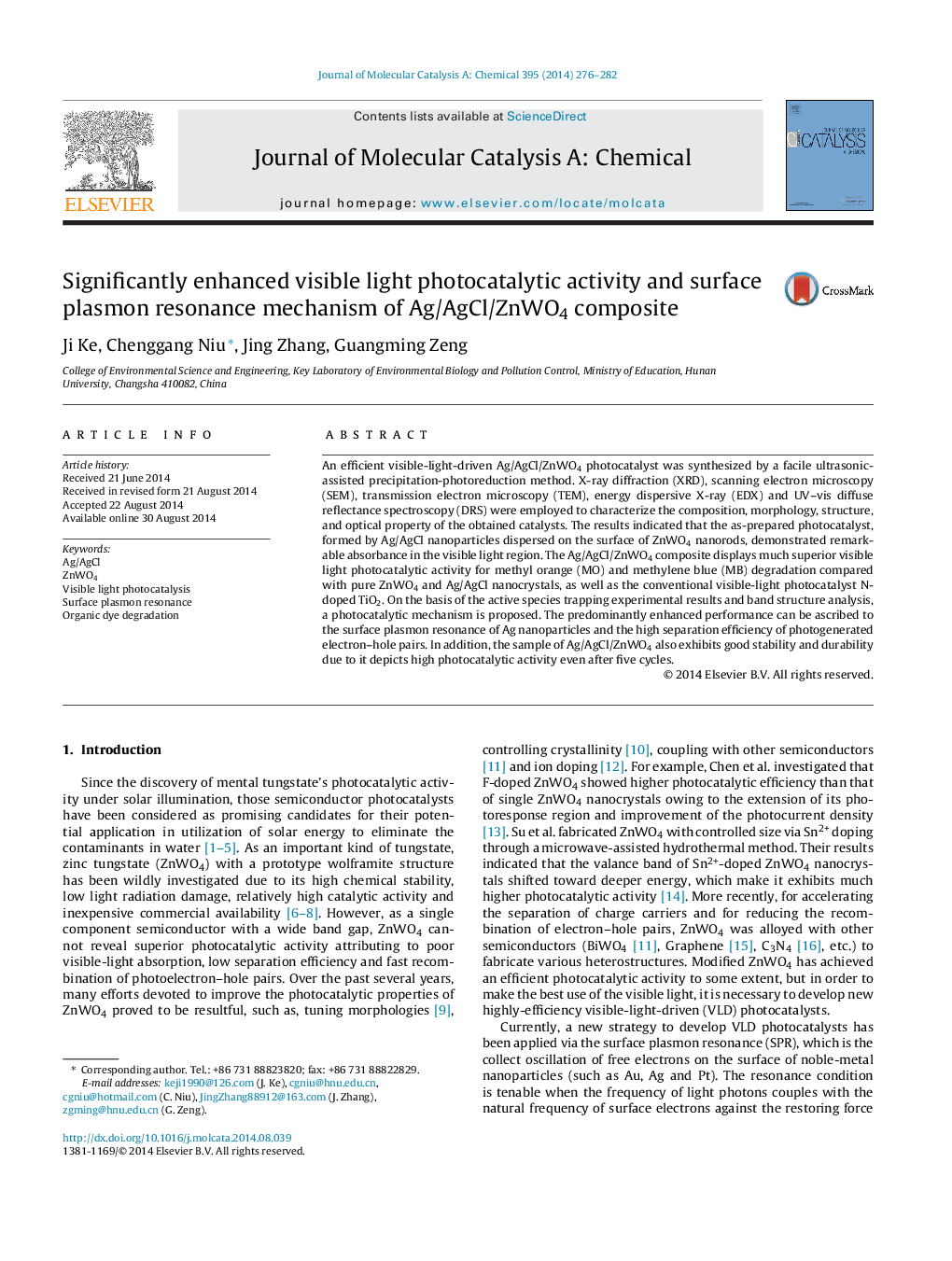| Article ID | Journal | Published Year | Pages | File Type |
|---|---|---|---|---|
| 65323 | Journal of Molecular Catalysis A: Chemical | 2014 | 7 Pages |
•Highly efficient Ag/AgCl/ZnWO4 photocatalyst was synthesized for the first time.•The catalyst showed great enhanced visible-light-driven photocatalytic activity.•A surface plasmon resonance mechanism was proposed.
An efficient visible-light-driven Ag/AgCl/ZnWO4 photocatalyst was synthesized by a facile ultrasonic-assisted precipitation-photoreduction method. X-ray diffraction (XRD), scanning electron microscopy (SEM), transmission electron microscopy (TEM), energy dispersive X-ray (EDX) and UV–vis diffuse reflectance spectroscopy (DRS) were employed to characterize the composition, morphology, structure, and optical property of the obtained catalysts. The results indicated that the as-prepared photocatalyst, formed by Ag/AgCl nanoparticles dispersed on the surface of ZnWO4 nanorods, demonstrated remarkable absorbance in the visible light region. The Ag/AgCl/ZnWO4 composite displays much superior visible light photocatalytic activity for methyl orange (MO) and methylene blue (MB) degradation compared with pure ZnWO4 and Ag/AgCl nanocrystals, as well as the conventional visible-light photocatalyst N-doped TiO2. On the basis of the active species trapping experimental results and band structure analysis, a photocatalytic mechanism is proposed. The predominantly enhanced performance can be ascribed to the surface plasmon resonance of Ag nanoparticles and the high separation efficiency of photogenerated electron–hole pairs. In addition, the sample of Ag/AgCl/ZnWO4 also exhibits good stability and durability due to it depicts high photocatalytic activity even after five cycles.
Graphical abstractFigure optionsDownload full-size imageDownload high-quality image (148 K)Download as PowerPoint slide
